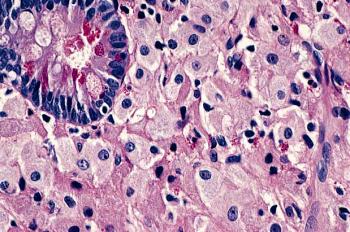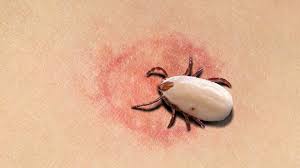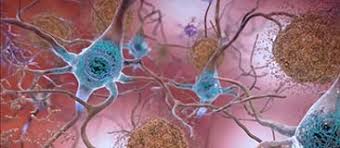Whipple’s disease is a rare infectious disease caused by the bacterium. Whipple’s disease is characterized by fever of unknown origin, polyarthralgias, and chronic diarrhea. Whipple’s disease causes weight loss, incomplete breakdown of carbohydrates or fats, and malfunctions of the immune system. The diagnosis of Whipple’s disease has been based upon identification of abnormalities in small bowel biopsies (a small rod shaped actinomycete) obtained during endoscopy and the broad number of complaints present in an individual patient. The disorder primarily affects middle-aged white men, and the onset of symptoms is usually slow. Without treatment, it may be fatal. Whipple’s disease is extremely rare, and risk factors are unknown. People with Whipple’s disease may develop heart murmurs. Confusion, memory loss, or uncontrolled eye movements indicate that the infection has spread to the brain. Patients may experience neurological symptoms as well. Diagnosis is based on symptoms and the results of a biopsy of tissue from the small intestine or other organs that are affected.
polyarthralgias, and chronic diarrhea. Whipple’s disease causes weight loss, incomplete breakdown of carbohydrates or fats, and malfunctions of the immune system. The diagnosis of Whipple’s disease has been based upon identification of abnormalities in small bowel biopsies (a small rod shaped actinomycete) obtained during endoscopy and the broad number of complaints present in an individual patient. The disorder primarily affects middle-aged white men, and the onset of symptoms is usually slow. Without treatment, it may be fatal. Whipple’s disease is extremely rare, and risk factors are unknown. People with Whipple’s disease may develop heart murmurs. Confusion, memory loss, or uncontrolled eye movements indicate that the infection has spread to the brain. Patients may experience neurological symptoms as well. Diagnosis is based on symptoms and the results of a biopsy of tissue from the small intestine or other organs that are affected.
Usually Whipple’s Disease occurs most often in men older than 45 years old. When recognized and treated, Whipple’s disease can usually be cured. Untreated, the disease may be fatal. Arthritis and fever often occur several years before intestinal symptoms develop. Chest pain can occur if fluid collects in the lungs and the membranes covering the lungs, the pleura, become inflamed. Patients with arthralgias have been found to have the organism in the synovial tissues. The organisms have been detected in the heart valves of patients with cardiac Whipple disease and in the CNS of patients with neurologic disease. Whipple’s disease is treated with antibiotics to destroy the bacteria that cause the disease. The physician may use a number of different types, doses, and schedules of antibiotics to find the best treatment.
Causes of Whipple’s disease
The common causes of Whipple’s disease include the following:
Whipple’s Disease is caused by an infectious organism called Tropheryma Whippelli.
The disease occurs most commonly in middle-aged white men.
Tropheryma whippelii DNA may be found in patients who are asymptomatic.
Symptoms of Whipple’s disease
Some symptoms related to Whipple’s disease are as follows:.
Abdominal pain.
Loss of appetite.
Diarrhea
Abdominal bloating..
Fever.
Fatigue, and weakness.
Headache.
Abdominal cramps.
Lymphadenopathy may be present.
Treatment of Whipple’s disease
Here is list of the methopds for treating Whipple’s disease:
Patients should receive prolonged antibiotic therapy with a drug that can treat infections of the brain and central nervous system. If symptoms reappear during therapy, patients may require a change in their antibiotic regimen.
In serious cases, fluid and electrolyte replacements will be needed.
Because of the nutrient-absorption difficulties associated with Whipple’s disease, your doctor may recommend taking extra iron, folate, vitamin D, calcium, and magnesium to ensure adequate nutrition.



